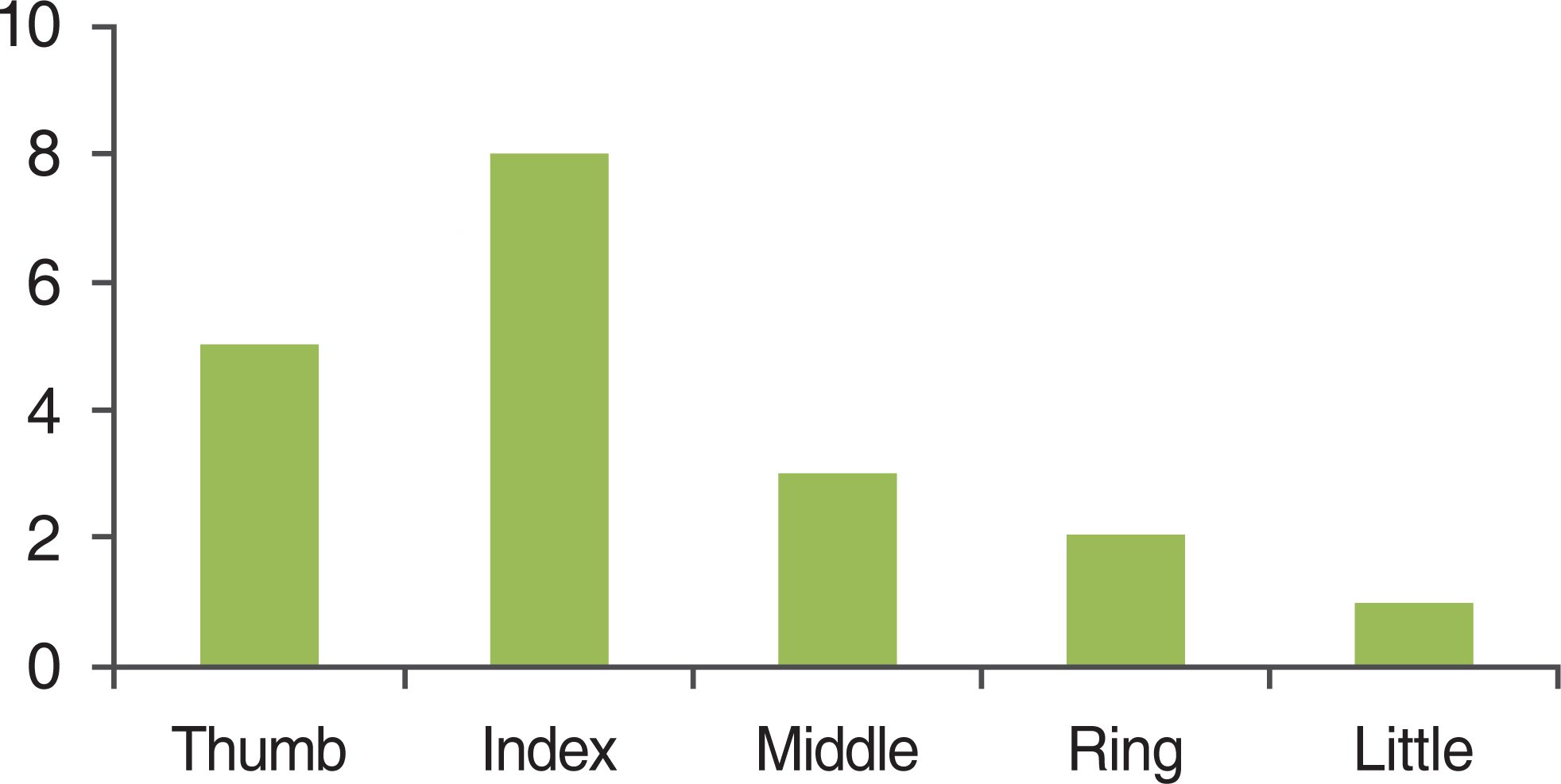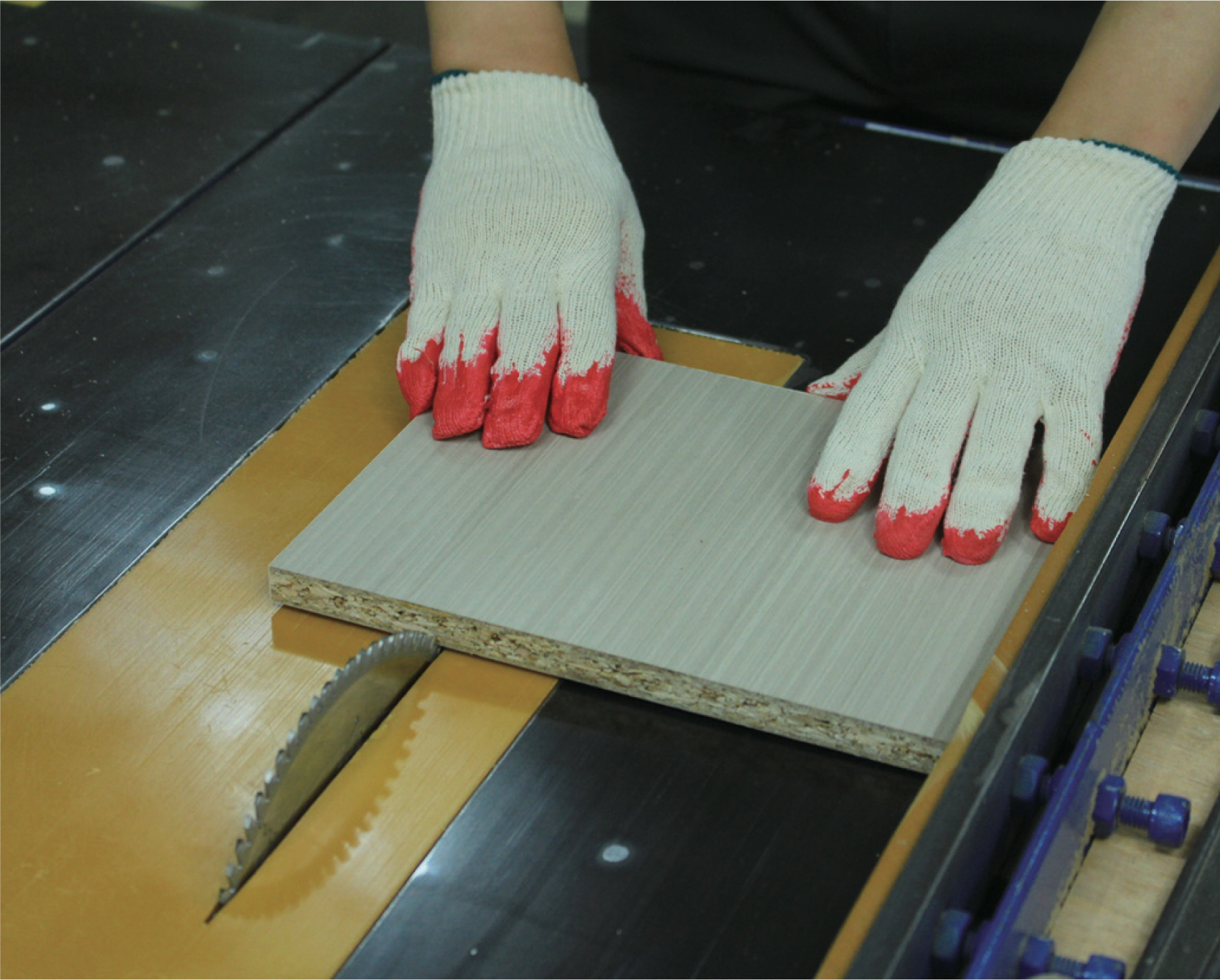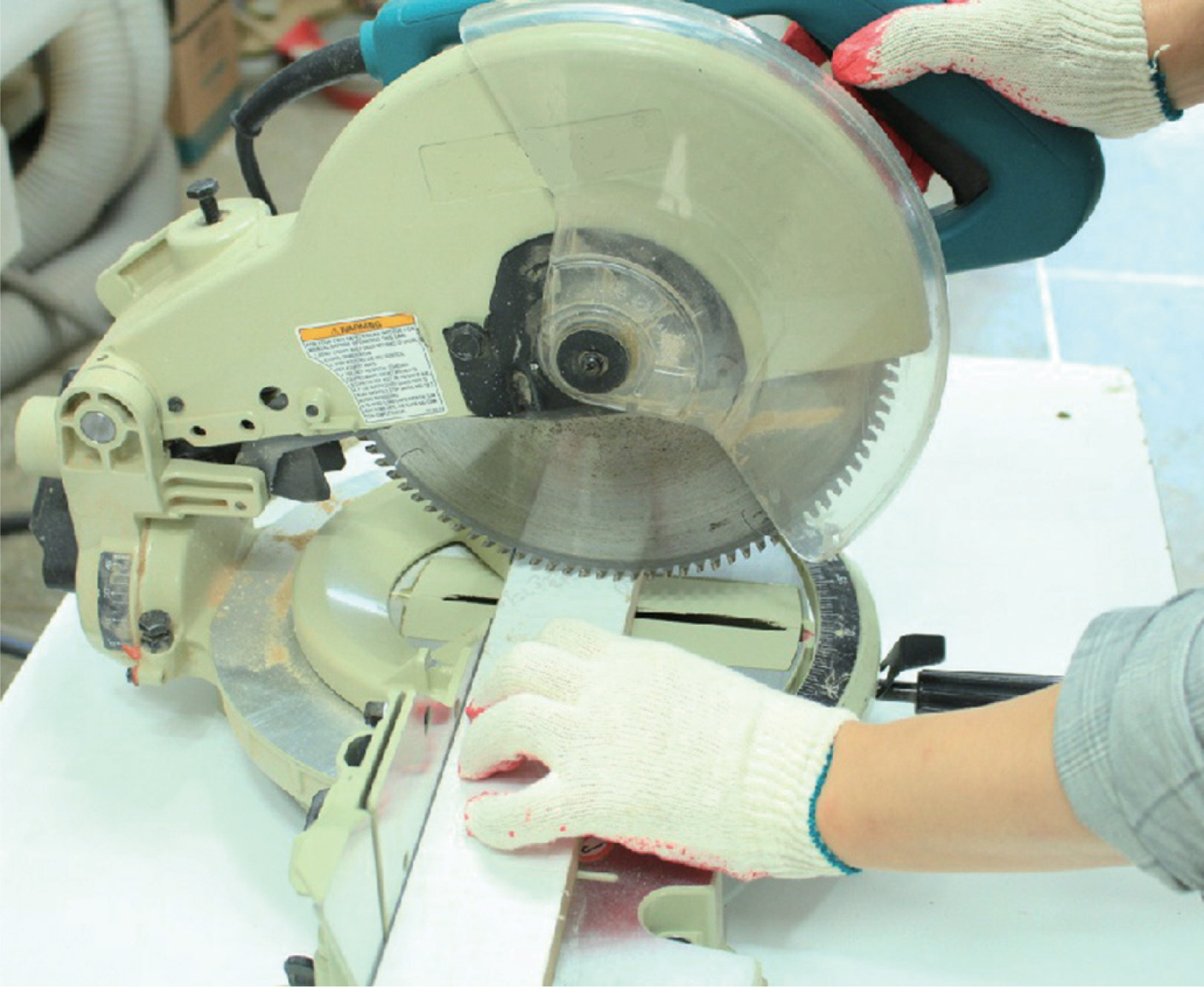J Korean Soc Surg Hand.
2016 Mar;21(1):38-44. 10.12790/jkssh.2016.21.1.38.
Hand Injury Patterns Caused by Different Electric Saws in South Korea
- Affiliations
-
- 1Department of Plastic and Reconstructive Surgery, Sanggye Paik Hospital, Inje University College of Medicine, Seoul, Korea. s2639@paik.ac.kr
- KMID: 2161162
- DOI: http://doi.org/10.12790/jkssh.2016.21.1.38
Abstract
- PURPOSE
Electric saw is widely used and patients involved with the tool are increasing. We made efforts to analyze data of saw-related hand injuries.
METHODS
Electric saw-related hand injuries that required operation were analyzed retrospectively by reviewing medical charts, clinical photographs and X-ray films from 2009 through 2013. Additionally, we interviewed patients regarding the type of electric saw involved (hand-held/table-mounted) and how the hand was injured.
RESULTS
There were 16 male patients with 19 injured fingers and 22 injured tendons. Due to the damaging mechanism of the electric saw, injuries were severe and complex such as tendon, bone defects, fractures and amputations. 4 fingers had open fractures. Separately, 4 were amputated. Non-dominant hands were injured more by hand-held saw, while, dominant hands were damaged more by table-mounted saw. The thumb and index fingers were injured mostly by electric saw. Probability of dominant and non-dominant hand injury depends on the types of electric saw because of the working position when using this tool.
CONCLUSION
Hand injuries can be classified according to the type of electronic saw used. Complete understanding of a specific trauma mechanism and the resulting injury patterns is important especially for hand surgeons. Surgeons should take into account the type of electric saw when examining patients. However, the most important step to prevent these types of injuries is to provide all workers with appropriate training and precautions before using the electric saw.
Keyword
MeSH Terms
Figure
Reference
-
1. US Forest Service, Missoula Technology & Development Center. Chain saw and crosscut saw training course: student's guidebook 2006 edition. Missoula: USDA;2006.2. Shields BJ, Wilkins JR 3rd, Smith GA. Nonoccupational table saw-related injuries treated in US emergency departments, 1990-2007. J Trauma. 2011; 71:1902–7.
Article3. Hoxie SC, Capo JA, Dennison DG, Shin AY. The economic impact of electric saw injuries to the hand. J Hand Surg Am. 2009; 34:886–9.
Article4. Starnes T, Saunders RJ, Means KR Jr. Clinical outcomes of zone II flexor tendon repair depending on mechanism of injury. J Hand Surg Am. 2012; 37:2532–40.
Article5. Frank M, Lange J, Napp M, Hecht J, Ekkernkamp A, Hinz P. Accidental circular saw hand injuries: trauma mechanisms, injury patterns, and accident insurance. Forensic Sci Int. 2010; 198:74–8.
Article6. Marcy N, Rutherford G, Mills A. Hazard screening report: power tools and workshop equipment [Internet]. U.S. Consumer Product Safety Commission. 2003 [cited 2016 Mar 14]. Aailable from:. https://www.cpsc.gov/PageFiles/106093/2003h054.pdf.7. US Consumer Product Safety Commission. Briefing package: petition for performance standards for table saws [Internet]. Bethesda: US Consumer Product Safety Commission; 2006 [cited 2008 Nov 25]. Available from. http://www.cpsc.gov/LIBRARY/FOIA/FOIA06/brief/tablesaw.pdf.8. Bonte W, Schroter F, Goldberg R. Injuries caused by accidents with chain saws. Z Rechtsmed. 1984; 92:215–23.
- Full Text Links
- Actions
-
Cited
- CITED
-
- Close
- Share
- Similar articles
-
- Epidemiologic study of hand and upper extremity injuries by power tools
- Facial injury patterns associated with stand-up electric scooters in unhelmeted riders
- Right Thalamic Hemorrhage Resulting from Low-voltage Electrical Injury: A Case Report
- The Management of Pediatric Steam Burn Caused by Electric Rice-cooker
- Neurological Complication After Low-Voltage Electric Injury: A Case Report




